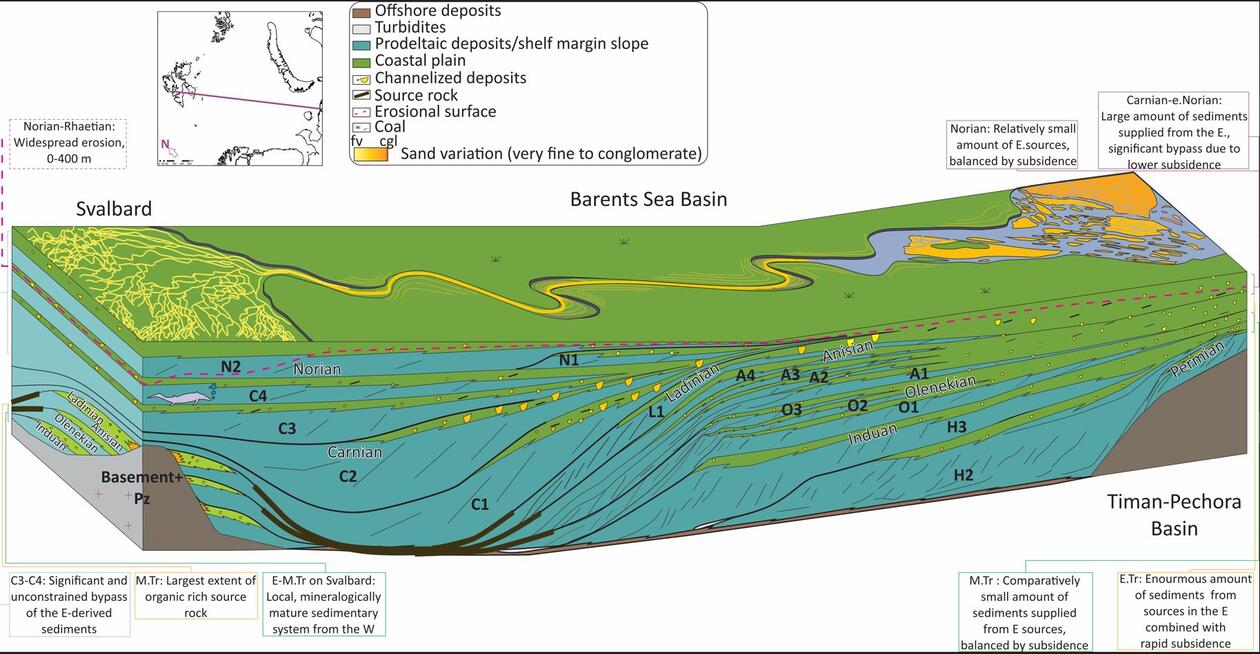Triassic rivers of the Barents Sea Basin
This Master's project was given to Jon Vaardal-Lunde, spring 2024.
Main content
Project description
Triassic in the Barents Sea is a well-studied succession comprising the SE-NW prograding delta. Triassic deposits are a big interest of hydrocarbon exploration in the region and proved to contain sandstones with well reservoir qualities mainly concentrated in channel facies. Although Triassic clinoforms are well mapped, understanding the large-scale distribution of the river deposits within clinoform packages is lacking. Knowledge about evolution, channel dimensions, channel geometries and channel abundances are important for understanding a sedimentary system and source area geodynamics. Moreover, tracking the changes throughout an extended period (50 million years) can improve current knowledge of long-live continental scale source-to-sink systems.
This study aims to map and estimate channel dimensions and understand changes in river morphology in response to sediment supply variations, climate and tectonic changes throughout the Triassic in the Norwegian Barents Sea using 3D-seismic data and well data. The student will be working in Petrel and Geoteric, core of particularly interesting channels will be logged in core storage at the NPD.
Proposed course plan during the master's degree (60 ECTS):
GEOV261 / Basin analysis and subsurface interpretation -10
GEOV352 / Field course in reservoir geology – 5
GEOV272 / Seismic Interpretation 10
GEOV361 / Sequence Stratigraphy and Source-to-Sink - 10
GEOV364 / Advanced basin analysis – 5
GEOV362 / Integrated tectonics and sedimentology field course – 5
GEOV302 / Data analysis in earth science – 10
GEOV360 / Advanced clastic sedimentology – 10
Or
AG-338 Sedimentology Field Course – from Depositional Systems to Sedimentary Architecture (10 ECTS) https://www.unis.no/courses/ag-338-sedimentology-field-course-from-depos...

